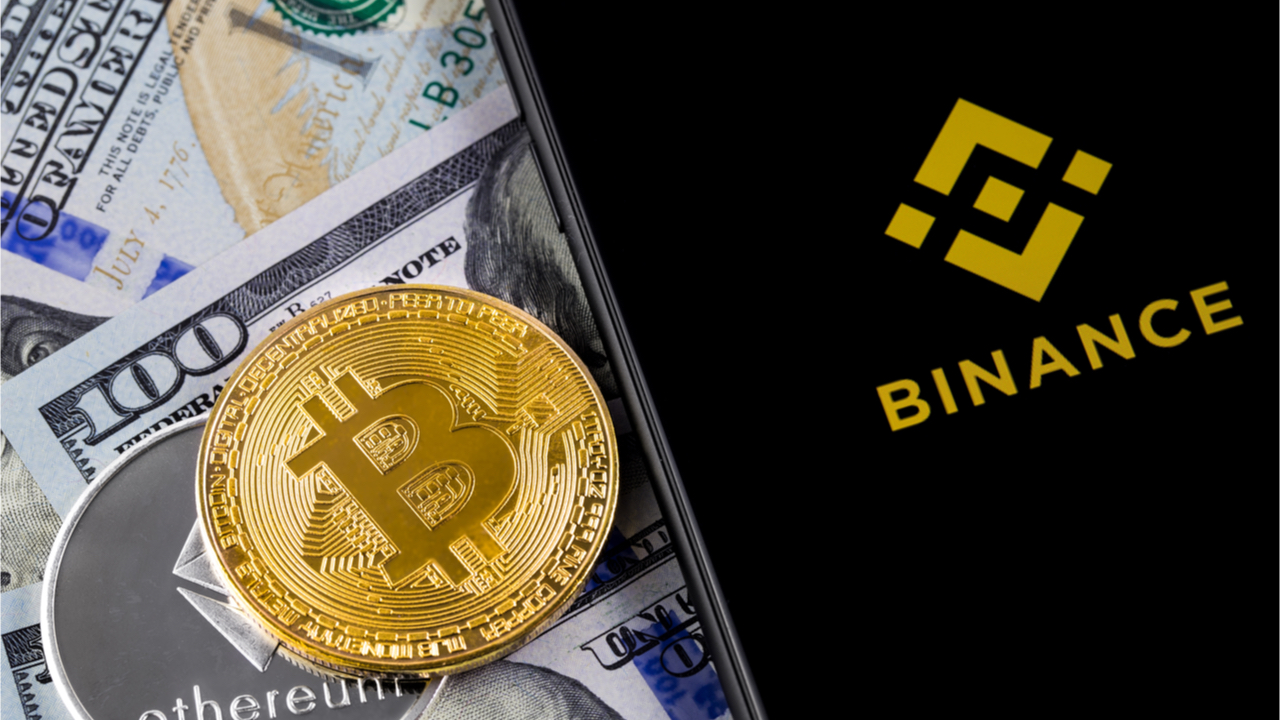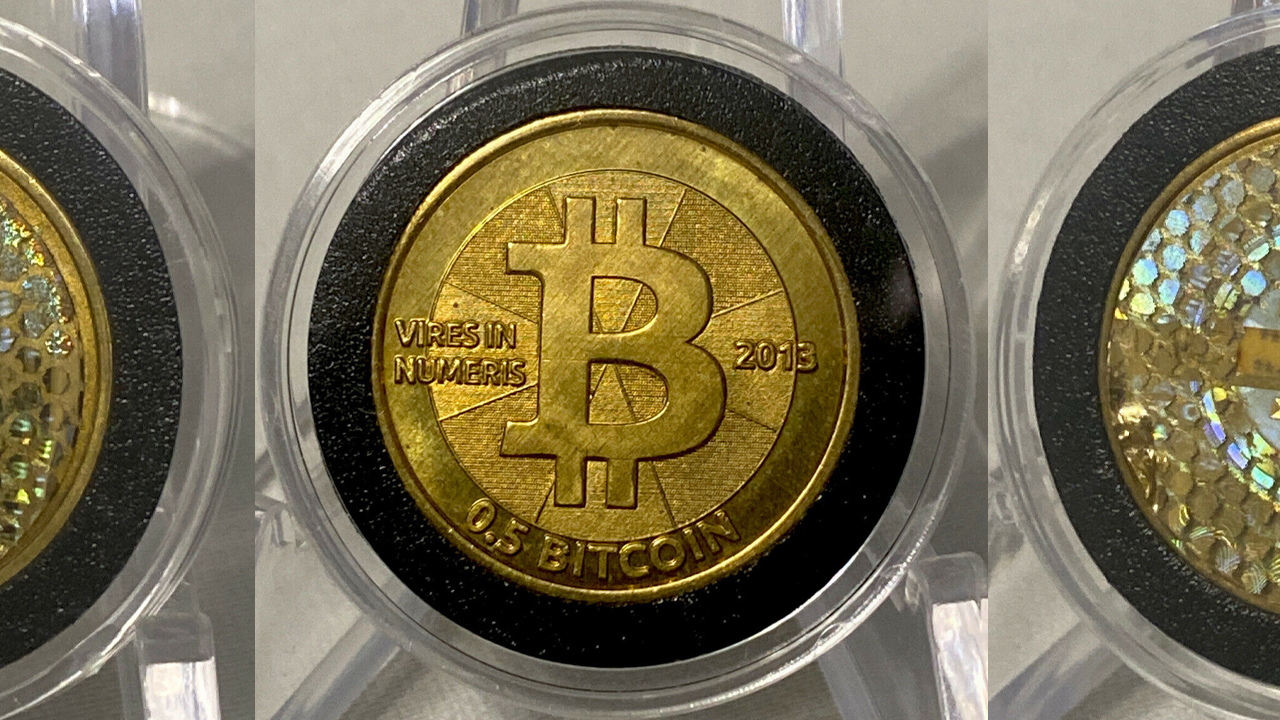
A closely followed crypto analyst says that Bitcoin (BTC) could see a sharp decrease if it fails to hold a crucial zone of support. In a new strategy session, crypto trader Ali Martinez tells his 110,700 followers on the social media platform X that sell pressure could see the crypto king plunge all the way […]
The post Crypto Analyst Says Bitcoin Plunge Below Critical Support Level Could Spell Trouble – Here’s His Target appeared first on The Daily Hodl.

The Bitcoin (BTC) bull market will most likely come to a conclusion sooner rather than later, according to an analysis published by CryptoQuant. In a new report, pseudonymous CryptoQuant executive Crypto Dan examines UTXO age bands, which look at specific groups of coins that have been received but not spent, and broken up into age […]
The post Bitcoin Bull Market Now Entering ‘Later Stages,’ According to CryptoQuant Analyst – Here’s Why appeared first on The Daily Hodl.
 This past week, a batch of five block rewards from 2009 were moved for the first time in almost two years. Interestingly, since 2015, only 48 block rewards from Bitcoin’s creation year have been spent. With the reawakening of these so-called ‘sleeping’ bitcoins from Bitcoin’s early days, it’s a good time to reflect on just […]
This past week, a batch of five block rewards from 2009 were moved for the first time in almost two years. Interestingly, since 2015, only 48 block rewards from Bitcoin’s creation year have been spent. With the reawakening of these so-called ‘sleeping’ bitcoins from Bitcoin’s early days, it’s a good time to reflect on just […] Although both bitcoin and ethereum have been cruising at lower prices compared to earlier this year, there’s been a silver lining: transaction fees on these leading blockchains have significantly decreased. With costs now sitting at notable lows, it could be the perfect moment to fine-tune transaction expenses for certain activities or even gather unspent transaction […]
Although both bitcoin and ethereum have been cruising at lower prices compared to earlier this year, there’s been a silver lining: transaction fees on these leading blockchains have significantly decreased. With costs now sitting at notable lows, it could be the perfect moment to fine-tune transaction expenses for certain activities or even gather unspent transaction […]

Transaction fees will play an important role in keeping Bitcoin miners afloat after the halving as the subsidy for mining a block is set to fall from 6.25 BTC to 3.125 BTC.
Fees on Bitcoin have surpassed Ethereum for three consecutive days as miners and traders prepare for the upcoming Bitcoin halving, and, to a lesser extent, the introduction of Runes on Bitcoin.
Bitcoin miners have cashed in $7.47 million in fees on April 17 — about $160,000 more than the $7.31 million paid to Ethereum stakers, according to Crypto Fees.
Bitcoin miners also raked in $9.98 million and $5.91 million across April 15 and 16 — beating out Ethereum stakers by $3.5 million and 1.1 million on those respective days.

Bitcoin Ordinals inventor Casey Rodarmor says a fungible token protocol like Runes wouldn’t leave as much “junk” on the Bitcoin network as that of BRC-20 tokens.
The inventor of Bitcoin Ordinals is proposing a new Bitcoin-based fungible token protocol as a potential alternative to the BRC-20 token standard.
The BRC-20 standard was launched in March by an anonymous developer “Domo.” Within two months, the BRC-20 market cap reached $1 billion, with PEPE and ORDI among the most notable BRC-20 tokens created on Bitcoin.
New terrible idea just dropped: Runes.
— Casey (@rodarmor) September 25, 2023
A worse-is-better fungible token protocol for Bitcoin.https://t.co/TPVrUvWxm8
BRC-20 enables the minting and transfer of fungible tokens via the Ordinals protocol on Bitcoin. But the issue with BRC-20 tokens is that they spam Bitcoin with “junk” Unspent Transaction Outputs or UTXOs, argued Rodarmor.
BRC-20 tokens have the “undesirable consequence of UTXO proliferation,” he explained in a Sept. 25 post, proposing Runes as a UTXO-based alternative.
“Protocols that are UTXO-based fit more naturally into Bitcoin and promote UTXO set minimization by avoiding the creation of "junk" UTXOs.”
TLDR on Runes - A potential fungible token protocol for Bitcoin
— Franken (@ItsFranken) September 25, 2023
ᚱᚢᚾᛖᛊ
- Casey remains skeptical, citing "99.9% are scams and memes," but recognises they don't appear to be going away.
- Employs a UTXO-based system, notably simpler than BRC-20.
- Uses the letter 'R' in the… https://t.co/zYP43f70gh
“If this protocol had a small on-chain footprint and encouraged responsible UTXO management, it might serve as harm reduction compared to existing protocols,” Rodarmor added.
UTXOs represent the amount of cryptocurrency left in a wallet following a completed transaction, where the balance is used in subsequent transactions and is stored in the UTXO database.
Bitcoin’s UTXO model plays a role in making Bitcoin an auditable and transparent ledger by preventing the double spending problem.
Rodarmor said other fungible token protocols on Bitcoin, such as Really Good for Bitcoin, Counterparty and Omni Layer have problems of their own.

While Rodarmor admitted 99.9% of fungible tokens are filled with scams and memes, he believes the right fungible token protocol can add value to the Bitcoin network:
“Creating a good fungible token protocol for Bitcoin might bring significant transaction fee revenue, developer mindshare, and users to Bitcoin.”
Related: Ordinals still make up majority of Bitcoin txs despite price collapse
In a Sept. 25 Twitter Spaces with The Ordinals Show co-host Trevor Owens, Rodarmor said he came up with the Runes idea last week and that he wasn’t sure whether he would pursue it any further.
Shortly after the call, Owens floated offering $100,000 from the Bitcoin Frontier Fund to prospective developers that can create a Rune application up and running as a means to further Rodarmor’s proposal.
Open $100k investment offer in upcoming @BTCFrontierFund accelerator for first team who can get a working (not terrible) Rune indexer, issuance and/or transfer app, up live and running
— trevor.btc (@TO) September 26, 2023
Don't make the tickers required to be unique, will be a shit show
DM me. Serious offer. pic.twitter.com/6W0IwlhB9x
Cointelegraph reached out to Rodarmor for comment but did not receive an immediate response.
Magazine: Blockchain games aren’t really decentralized… but that’s about to change

If Back and Finney’s $10 million price prediction becomes true, the BTC market cap will reach approximately $200 trillion.
Blockstream CEO Adam Back believes the price of Bitcoin (BTC) could reach $10 million by the end of the sixth halvening in 2032, as long as Bitcoin layer-2 technology and wallet infrastructure improves.
In a Feb. 12 Twitter thread, Back, one of the contributors to Bitcoin core, was explaining to his 509,000 followers in what situation Hal Finney’s $10 million price prediction for BTC could come true.
He noted that BTC has doubled in price year-on-year on average since 2013 and explained that if that trend continues, BTC price would reach $10M along with a $200 trillion market cap in around nine years time.
early this year i was curious of the claim "bitcoin 2x's per year on average". it checks: the decade jan 2013 - dec 2022 #bitcoin went up 2.036x/year (1200x in a decade). if that continues we'll cross $10mil/BTC and $200 tril market cap by end of next 2 halvenings, about 9 years. pic.twitter.com/mqmO2SRdAv
— Adam Back (@adam3us) February 12, 2023
However, Back said that in order for that figure to be reached, improvements in Bitcoin layer-2 technologies and wallet infrastructure needs to be fast tracked to give time for these innovations to scale:
“i think things will get “interesting” over the next two halvings. and fast, we don't have much time to scale tech. we need somewhere for the next billion users to own their own UTXO, their own keys, with censorship-resistant cold storage. without weakening main-chain security.”
Back said that it “probably means sidechains/drivechains as a tradeoff. more lightning optimization [...] we don't have much time as tech takes time to mature, wallets, interop, integration.”
Responding to a comment, Back said he believes Bitcoin adoption hasn’t reached the bottom of the S-curve yet, as only 1-2% of the world population has tapped into Bitcoin. He predicts more investors will begin to “stack” BTC into cold storage wallets:
“given volatility, i think #bitcoin can overshoot wildly and tap one of these $100-300 trillion market caps, correct and then regain a steadier adoption over time. i suspect people with average entry points, relative to then current price won't have much incentive to sell in size.”
The CEO explained that part of that next wave of adoption may come from what he describes as “hyperbitcoinization spurts” — where people in hyperinflationary environments will “rush” to bitcoin:

Related: Blockstream CEO Adam Back talks Bitcoin over a game of Jenga
However, responding to another comment, Back also admitted that “we’ve utterly failed to financialize bitcoin” thus far. The cypherpunk suggested that Bitcoin could be used in mortgages where property is used as collateral and Bitcoin as the interest:
“the market in bitcoin-native financialisation is immature, almost untouched. bitcoin structured products, mortgages backed by real-estate but interest guaranteed by BTC, other products make bitcoin easier to use for more people, and match risk profiles. which creates more growth.”
Back added that in order to approach $10 million, BTC would also need to “displace” a significant proportion of store of value premiums in bonds, real estate, gold and stock portfolios.
You think bitcoin twitter is bullish? Hal Finney (@halfin), was calculating a bitcoin price of $10,000,000 per coin just ONE WEEK after the the genesis block on January 3rd, 2009.
— Doc (@DrBitcoinMD) August 23, 2019
Absolute legend. pic.twitter.com/5MptLhEYHL
BTC is currently priced at $21,800.
 In a post-mortem issued shortly after it lifted the freeze on bitcoin withdrawals, Binance has identified the “repairing of several minor hardware failures on wallet consolidation” as the incident that ultimately forced it to pause withdrawals. To fix the problem and to stop this from recurring, Binance said it changed the logic “to only take […]
In a post-mortem issued shortly after it lifted the freeze on bitcoin withdrawals, Binance has identified the “repairing of several minor hardware failures on wallet consolidation” as the incident that ultimately forced it to pause withdrawals. To fix the problem and to stop this from recurring, Binance said it changed the logic “to only take […] Since September 18, 2021, close to 250 Casascius physical bitcoins were redeemed over the last 198 days. On that day six months ago, there were 19,920 Casascius physical bitcoins left active and today, there are approximately 19,676 left to peel. 19,676 Casascius Physical Bitcoins Left to Peel During the last six months, approximately 244 Casascius […]
Since September 18, 2021, close to 250 Casascius physical bitcoins were redeemed over the last 198 days. On that day six months ago, there were 19,920 Casascius physical bitcoins left active and today, there are approximately 19,676 left to peel. 19,676 Casascius Physical Bitcoins Left to Peel During the last six months, approximately 244 Casascius […] Wasabi Wallet, a privacy-oriented bitcoin-only wallet, has announced it will start introducing censorship methods into its mixing procedures. The announcement was made on social media, where the official account of Wasabi explained that a blacklist will prevent some UTXOs (unspent transaction outputs) from registering to Coinjoins, the method Wasabi and other wallets use to enhance […]
Wasabi Wallet, a privacy-oriented bitcoin-only wallet, has announced it will start introducing censorship methods into its mixing procedures. The announcement was made on social media, where the official account of Wasabi explained that a blacklist will prevent some UTXOs (unspent transaction outputs) from registering to Coinjoins, the method Wasabi and other wallets use to enhance […]